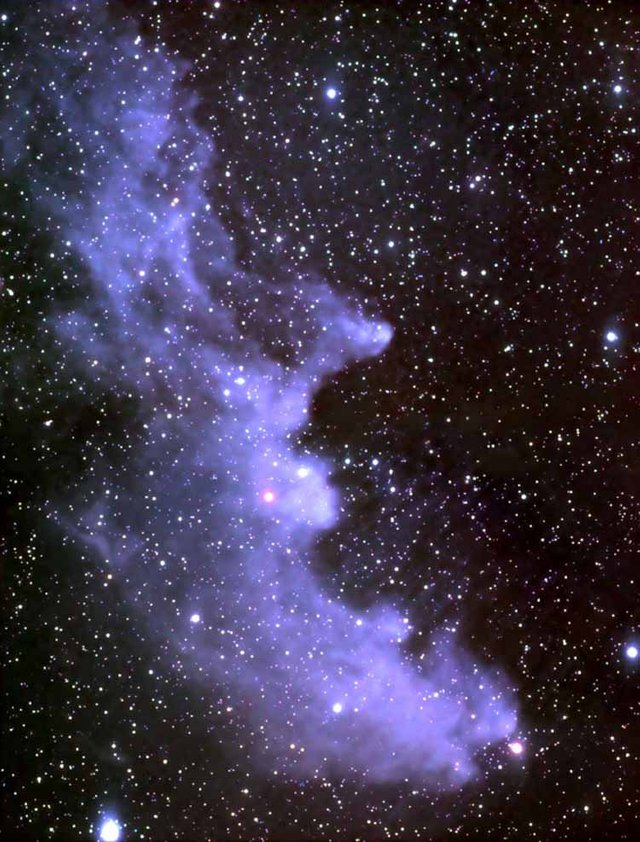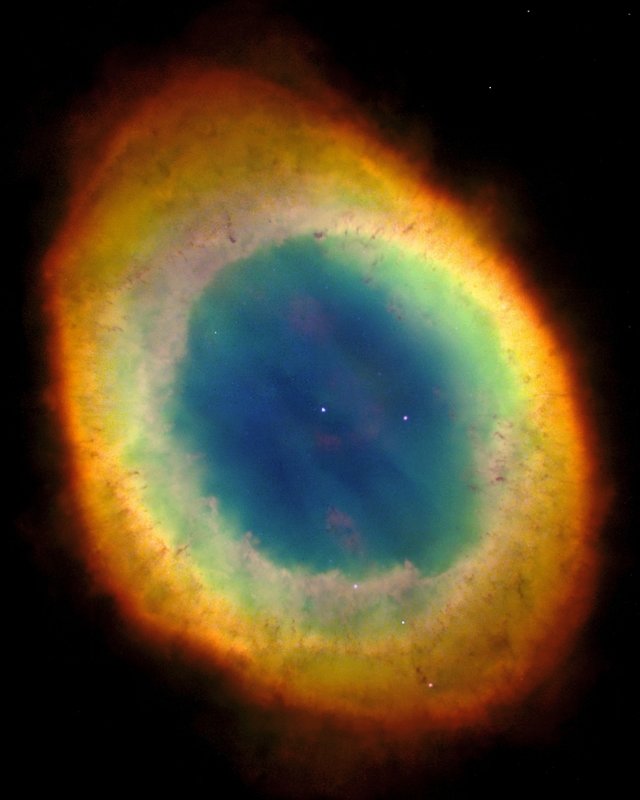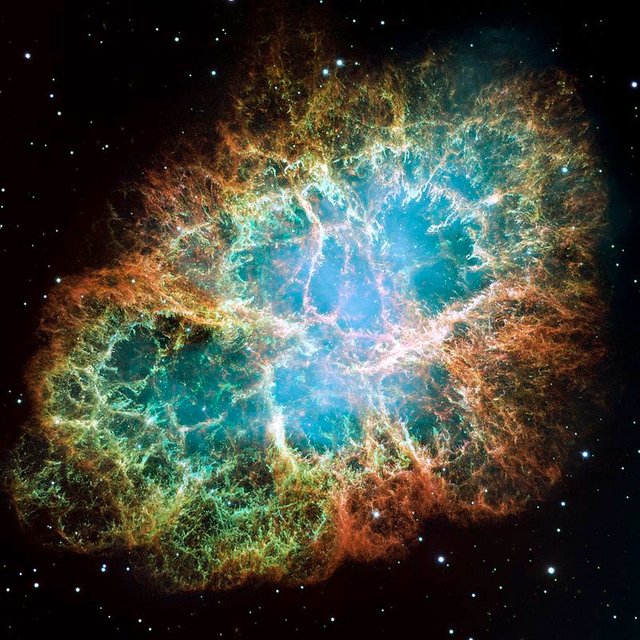Astronomy 101: Nebulas
.jpg)
Hello steemians, I know I haven't been posting constantly, forgive me but I have been super busy in my "real" world job, but the important thing is that I have returned and today I want to bring you another great chapter of the series I started some time ago and that I think has been very well received; I mean Astronomy 101.
As you know, in his finite vastness the universe is full of hundreds and perhaps thousands of objects that are currently being constantly investigated, in fact, I would dare to say that we have not touched even the surface in terms of the number of things that exist there in space, but for now let's settle for what we have discovered and what we can explain or know in a certain way.
In the previous chapter of Astronomy 101 I talk about the Oort cloud, a gigantic cluster from where it is believed come from, most of the comets and asteroids that are dispersed in the solar system, well today I will talk about another cluster of materials but this time something very different, I'm talking about nebulas.
Nebulas
A nebula (Latin for "cloud" or "fog") is an interstellar cloud of dust, hydrogen, helium and other ionized gases.
Wikipedia
As I mentioned at the beginning of the post, the Nebulas also constitute a cumulus or group, but this time not of objects but of diverse gases, besides stellar dust. However, this does not stop there, in a simple accumulation of stellar gases and dusts, since it has been theorized that the nebulae, besides representing immense regions of space, could also be the place where the origin of the stars is; in short, from that great accumulation of gaseous materials and stellar dust, the stars are formed thanks to the process of union that occurs in the nebulae.
And just like the accumulation of rocks and materials that formed the big Oort cloud, the nebulae are also estimated to be extremely large in size, in fact before the use of more advanced telescopes, galaxies used to be confused with nebulae, so you can get an idea of how gigantic the nebulae are.
.… the Andromeda Galaxy, for instance, was once referred to as the Andromeda Nebula (and spiral galaxies in general as "spiral nebulae") before the true nature of galaxies was confirmed in the early 20th century by Vesto Slipher, Edwin Hubble, and others.
A remarkable fact about nebulae, is that although they are all clusters of gases, they were not all formed in the same way, as most of them are believed to be the result of the concentration of stellar remnants and the agglomeration of gases that already exist in space, in addition to the same gases that originate from the formation of other stars. However, another way in which nebulae can form is from matter resulting from the explosion of a supernova.
Different formation, different kind of nebulae.
As I just mentioned in the previous paragraph, not all nebulae are formed in the same way, therefore not all nebulae are the same, i.e. there is more than one type of nebula.
For now, these are the nebulae that we know:
Dark Nebulae
This type of nebulae is very particular and in fact they are also called absorption nebulae since this type of accumulation of materials absorbs practically all the light that is projected towards it so it is extremely dark, in fact, this type of nebulae are extremely difficult to identify.
Dark nebulae absorb light, as the cloud of materials they are made of is so dense that it simply absorbs the light reflected from it without being projected back.
…The largest dark nebulae are visible to the naked eye, appearing as dark patches against the brighter background of the Milky Way like the Coalsack Nebula and the Great Rift. These naked-eye objects are sometimes known as dark cloud constellations and take on a variety of names.
Most of the dark nebulae that have been discovered are due to the use of radio waves and infrared waves since through the use of these waves it is possible to map certain areas of space and identify them by analyzing the composition of materials present inside the clouds that are found.
Reflection Nebulae
This particular type of nebula is formed from the stellar remnants of other stars that when concentrated form the clouds of gases that compose them, however, these nebulae have the peculiarity that they are not capable of emitting their own light, but nevertheless what they are capable of is to act as large mirrors and project light from other stars and objects in the universe.
Although it sounds a little simple, these nebulae, not having enough energy to generate their own light, take the light emitted by stars and other nearby nebulae to project it through space, so I referred to it as gigantic mirrors.
Emission Nebula
Unlike their sisters, these nebulae generate enough energy or heat, which allows them to emit their own light instead of reflecting the light from other objects. The energy necessary for these nebulae to emit light comes from the birth of stars or massive stars that, when emitting radiation, allow the ionization processes of the gases contained within these nebulae to take place.
Basically, these nebulae are capable of emitting light by capturing high-density photons from nearby stars, or by the birth of a new star inside these nebulae that gradually distills large amounts of energy that is more than sufficient for the gas ionization processes.
Planetary Nebulae
This type of nebula is the product of the stellar remnants and gases released after the extinction of not so massive stars, basically, a nebula of this type will originate after our Sun is extinct, since its mass is not as large as that of the rest of the stars in the universe.
Their name comes from a way of associating them with the size of the stars from which they originate, that is to say, not very massive stars. It should be noted that this type of nebulae is usually also associated with emission nebulae since, in general, this type of nebulae can generate their own light and propagate it through space. Of course, everything will depend on whether the conditions are met for the ionization of the necessary gases to allow the generation of the energy that can generate bursts of light.
Supernova remnants
This is perhaps the last known type of nebula, and as you can deduce they born from supernova bursts, i.e. from the material, gases, and energy released after the explosion that ends the massive and supermassive stars.
Because these nebulae are the product of the remnants left behind by large stars, these nebulae are able to generate large ionization processes from the energy expelled by the same supernova that produced them, as well as from pulsars or some other massive stars that emit exorbitant amounts of energy.
A remarkable fact about this type of nebula is that a large number of cosmic rays are generated from it due to the incredible amount of energy that is released from the interior of this type of nebula.






Congratulations! This post has been upvoted from the communal account, @minnowsupport, by anomalogy from the Minnow Support Project. It's a witness project run by aggroed, ausbitbank, teamsteem, theprophet0, someguy123, neoxian, followbtcnews, and netuoso. The goal is to help Steemit grow by supporting Minnows. Please find us at the Peace, Abundance, and Liberty Network (PALnet) Discord Channel. It's a completely public and open space to all members of the Steemit community who voluntarily choose to be there.
If you would like to delegate to the Minnow Support Project you can do so by clicking on the following links: 50SP, 100SP, 250SP, 500SP, 1000SP, 5000SP.
Be sure to leave at least 50SP undelegated on your account.